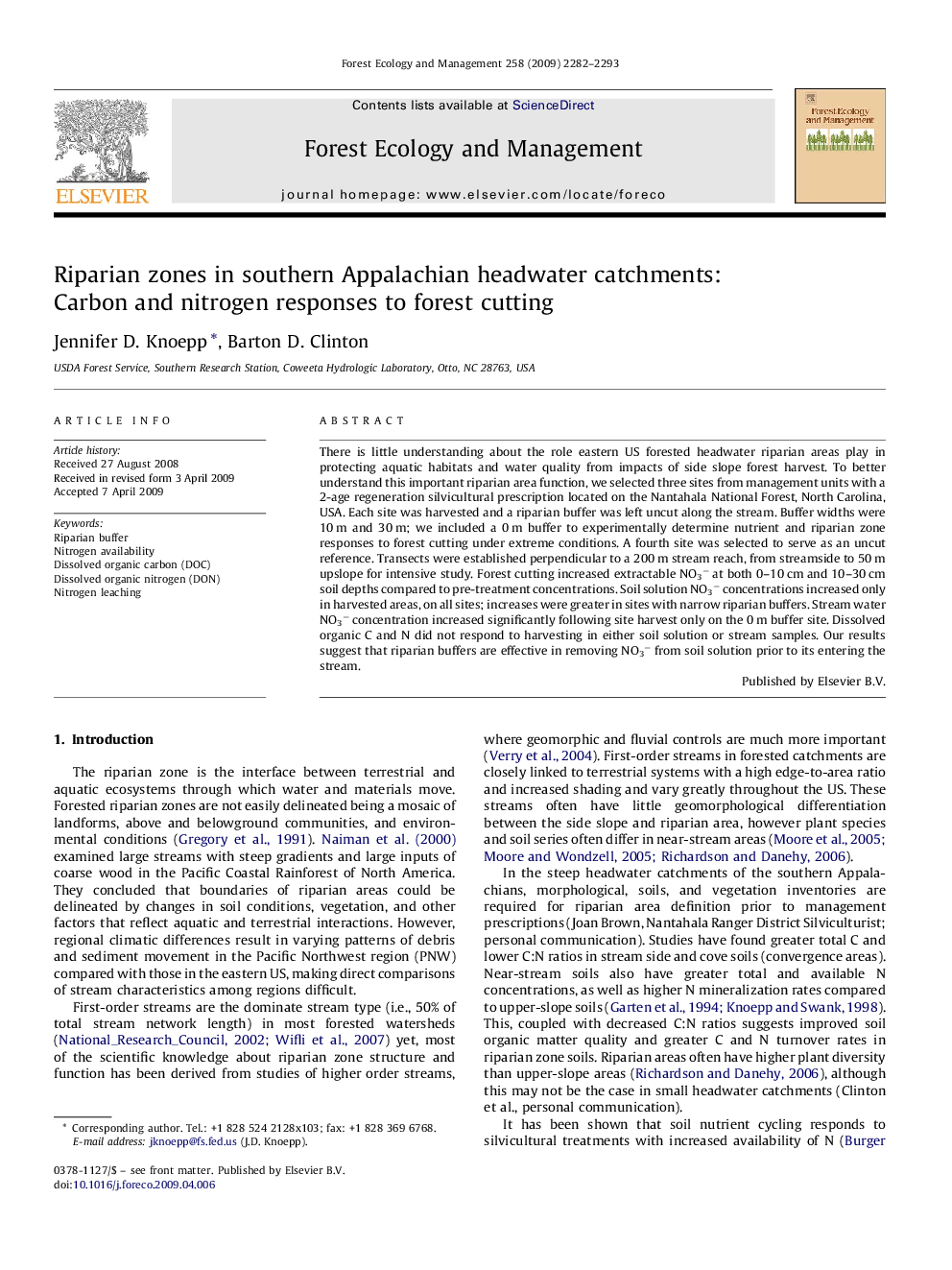| Article ID | Journal | Published Year | Pages | File Type |
|---|---|---|---|---|
| 88867 | Forest Ecology and Management | 2009 | 12 Pages |
There is little understanding about the role eastern US forested headwater riparian areas play in protecting aquatic habitats and water quality from impacts of side slope forest harvest. To better understand this important riparian area function, we selected three sites from management units with a 2-age regeneration silvicultural prescription located on the Nantahala National Forest, North Carolina, USA. Each site was harvested and a riparian buffer was left uncut along the stream. Buffer widths were 10 m and 30 m; we included a 0 m buffer to experimentally determine nutrient and riparian zone responses to forest cutting under extreme conditions. A fourth site was selected to serve as an uncut reference. Transects were established perpendicular to a 200 m stream reach, from streamside to 50 m upslope for intensive study. Forest cutting increased extractable NO3− at both 0–10 cm and 10–30 cm soil depths compared to pre-treatment concentrations. Soil solution NO3− concentrations increased only in harvested areas, on all sites; increases were greater in sites with narrow riparian buffers. Stream water NO3− concentration increased significantly following site harvest only on the 0 m buffer site. Dissolved organic C and N did not respond to harvesting in either soil solution or stream samples. Our results suggest that riparian buffers are effective in removing NO3− from soil solution prior to its entering the stream.
